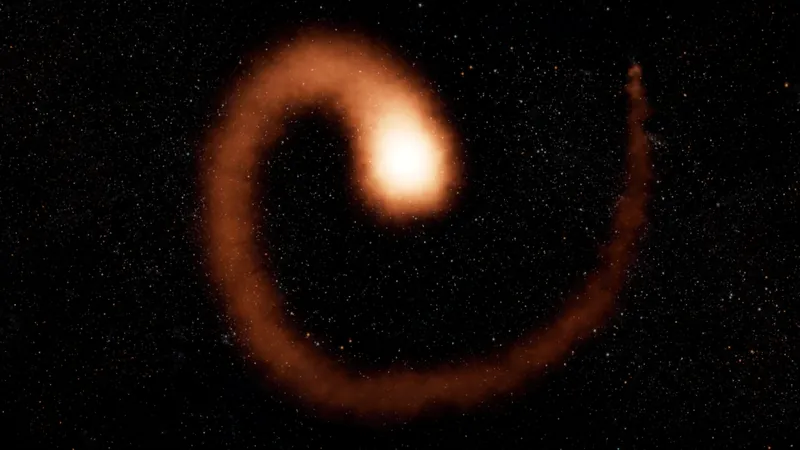
New Discoveries About 'Death Star' Cosmic Pinwheel Significantly Decrease Gamma-Ray Threat to Earth!
2025-03-21
Author: Wei
A Groundbreaking Study
A groundbreaking study has shaken up the astronomical community's perceptions of a cosmic behemoth known as the "Death Star," a striking pinwheel that has long been feared for its potential to unleash deadly gamma rays onto our planet.
Location and Visuals
Located approximately 8,000 light-years away in the Sagittarius constellation, the center of this majestic pinwheel is a pair of giant hot stars bound in a binary orbit. For over 20 years, astronomers have observed an impressive spectacle: massive plumes of gas ejected from both stars collide in the emptiness between them, intertwining to create an enrapturing spiral of gas and dust in the depths of space.
Concerns About Gamma Rays
Until now, researchers were worried that Earth’s alignment with this system, known as Wolf-Rayet 104, could expose us to catastrophic gamma rays from the stars' impending explosive deaths. This ominous classification earned Wolf-Rayet 104 its notorious nickname, the "Death Star," inciting concerns about a celestial catastrophe.
New Findings from Keck Observatory
However, an innovative analysis conducted at the Keck Observatory in Hawai'i has uncovered revealing insights. By measuring the motions of the two massive stars, their respective orbits, and the dynamics in their spectra resulting from the violent interactions of their stellar winds, scientists have determined that the stars’ orbits are actually tilted between 30 to 40 degrees away from Earth. This crucial piece of information drastically reduces the likelihood of a gamma-ray onslaught reaching our planet.
Researcher's Reaction
Grant Hill, a researcher at the Keck Observatory, shared his astonishment: "When I started this project, I anticipated focusing mainly on the colliding winds, thinking a face-on orbit was inevitable. Instead, I stumbled upon the unexpected: the orbit is tilted significantly out of the plane of the sky."
Implications and Future Questions
This study doesn’t just ease fears; it has also sparked new questions for astronomers. The discrepancy between the observed face-on dust spiral around the stars and their tilted orbit suggests there could be complex physics at play, possibly illuminating additional unrecognized mechanisms that influence the dust spiral’s orientation.
Conclusion
Hill eloquently stated, “This exemplifies how astronomy often begins with a straightforward inquiry, only for the universe to unveil enigmas we never foresaw. In turn, that’s how we expand our understanding of physics and our universe.” Thus, while Wolf-Rayet 104 may not pose the imminent danger it once appeared to, it continues to captivate scientists, proving that it still has plenty of surprises in store. As we advance our technological capabilities, who knows what other celestial wonders will unfold before us? Buckle up — the universe is full of mysteries waiting to be unveiled!


 Brasil (PT)
Brasil (PT)
 Canada (EN)
Canada (EN)
 Chile (ES)
Chile (ES)
 Česko (CS)
Česko (CS)
 대한민국 (KO)
대한민국 (KO)
 España (ES)
España (ES)
 France (FR)
France (FR)
 Hong Kong (EN)
Hong Kong (EN)
 Italia (IT)
Italia (IT)
 日本 (JA)
日本 (JA)
 Magyarország (HU)
Magyarország (HU)
 Norge (NO)
Norge (NO)
 Polska (PL)
Polska (PL)
 Schweiz (DE)
Schweiz (DE)
 Singapore (EN)
Singapore (EN)
 Sverige (SV)
Sverige (SV)
 Suomi (FI)
Suomi (FI)
 Türkiye (TR)
Türkiye (TR)
 الإمارات العربية المتحدة (AR)
الإمارات العربية المتحدة (AR)